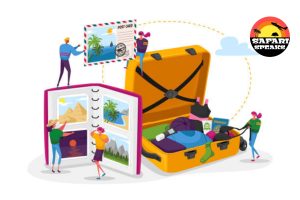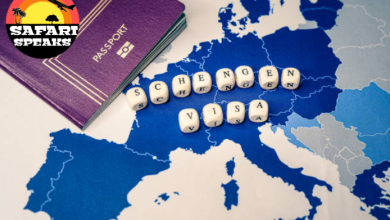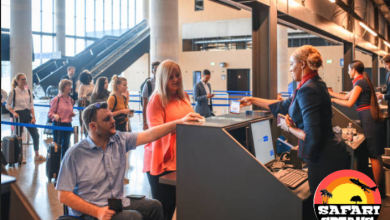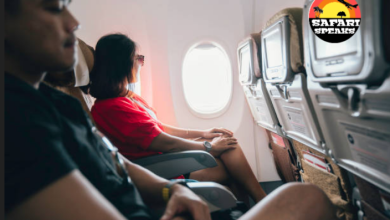Family Travel Tips To Know Before Traveling With Children

Traveling with children successfully depends on accepting the fact that your trip will be very different than if you were on your own. Children can sometimes become a hindrance to enjoying one’s holiday and catching all the necessary cruise that have been longed for due to their stubbornness.
You probably won’t be pub crawling or dancing until dawn (although you can find excellent babysitters if you do; instead you’ll be up early watching the barges along the Seine or enjoying the marionette show at the Tivoli Gardens .
Before the trip , it’s essential to involve your children in the plans and anticipation . Let them know where you are going, show them some colorful brochures, pictures or videos from the internet about the location where you are going, describe some of the things you’ll be doing . “We’ll be flying on an airplane” you might say , until we get to St. Louis . Then in St. Louis we’ll go to a zoo , and we’ll go up in a big silver arch , and we’ll see the Mississippi River.
Imagine what your child would most like to do go to an amusement park? A zoo where he can pat animals? Or out in a canoe ? Of course , if you promise your child you’ll be doing something he’s excited about , it goes without saying that you should remember to do it .
In planning your trip , think about your family’s habits favorite activities , both separately and as a group , how you solve problems and make decisions.
How well do your children get along together? Do they need constant adult supervision? Can they get absorbed in activities for a long time or do they need to move on to something new? How do they behave in restaurants? What do they most like to do – active play? Making things? Being read to? With these answers you can plan your trip to accommodate the personalities involved .

Children can be great company on trips to places more exotic than this country and Europe. We know children who have traveled with their parents through India, trekked in Nepal, and viewed game in Kenya. Children speak a universal language, and you will find that they bring out the very best in people.
You will see smiles shining out from otherwise impassive faces; women in particular will often relate to the kids where they’d be too shy to talk to you alone. In most every situation in the Third World there are kids around or involved, so you won’t feel that yours are especially loud or annoying. Reliable baby-sitters help is available at a very reasonable rate check with the U.S Visa Consulate in your country.
Junior high school age seems the very best time for kids to travel with their parents. They are old enough to understand and remember what they see, yet they are not so grown up that they are constantly wanting to escape from the family.
At this age travel to an exotic place can be a profound, incomparable education – one of us still remembers the amazement with which she experienced the bazaar in Old Jerusalem at the age of twelve.
Guidelines To Follow When Traveling With Children
The most important guideline is to slow your pace to that of your kids, not to rush them around . Plan for resting time, for ice cream and eating time. Always expect things to take a little longer than usual.
Not only will the kids be happier if they are not rushed, but you will have some very special travel experiences, the world seen through their eyes. Don’t let yourself be easily embarrassed by your kids in a strange place – try to understand their feelings and be on their side.
As mother’s puts it all, the kids are put in first place priority. When you visit places, all attention may be entirely on your kids – that may be fine but your happiness also matters. You have to make sure you satisfy yourself with your sightseeing while you also watch out for your children or the holiday ends up being stressful while looking out for your children.
As with all budget travelers, lunch can be your big meal. Restaurants seen more tolerant of energetic kids at lunchtime than at dinner. The same dish can be much cheaper.

Picnics are always fun, indoors and out. Whether it’s a rest area, a beach, a park bench, or a nice meadow by the stream, you can relax, roughhouse, kick off your shoes and socks and so on. You can also picnic at night in your motel room after having your main meal at lunch.
Bed and breakfast are ideal for families traveling with kids. The atmosphere is usually much more relaxed than in a hotel or motel. Children will particularly enjoy staying on a working farm. When you call or write for reservations, mention the number of kids you are bringing and their ages.
In a foreign country, you and your children can learn the language together. While you are still at home, buy a foreign language instructional book, download audio or videos about the videos or get registered with a certified language teacher.
Learn good words like “please, sorry, excuse me, thank you and more” . You can also learn some simple phrase like how to make purchases and other street languages that can be of help .
Remember that in many foreign countries, children are expected to behave in a more restrained manner than they might have been doing in your country. They can also learn to show respect towards elderly people.
Never pass up a chance for the kids to use a bathroom. The most reliable places to find restrooms are trains, bus stations and hotels.
Restaurants and coffee shops will usually have them in the back, and if your child needs to use the toilet, do not be embarrassed if you are not ordering anything to eat. In an emergency, shopkeepers may offer their facilities. Throughout much of the world, the word ‘Toilet’ or ‘WC’ will be understood.
Guidelines On What To Take When Traveling With Children
Each child should have a small knapsack for personal possessions – a new book or two crayon and paper, stickers, Play-Doh, a diary or other toys. In the outside pocket, slip a little flashlight and a little memo pad and pen.
This knapsack will be the child’s own property where he can stick any special treasures accumulated on the trip. He should help himself choose the toys and pack them. If he is big enough (age two is big enough) he should carry it himself.
One mother we know takes her daughter shopping a few days before the trip to purchase new crayons and other items for her pack – which she then have to save for her trip. This makes the girl always anxious to get going on the trip so that she can open her pack and use her new toy.
Puzzles are only fun until a piece gets lost. If you do not bring one along, make sure it is small enough to fit on an airplane or train table. Count the pieces when. You take them out of the box and again when you put them back in.
In addition to bringing a flashlight for each child, bring your own nightlight (with an adaptor if you are abroad). If your children awakens at night and are scared in an unfamiliar room, it may reassure them to be able to see. Also one parent can move around and take care of the problem without awakening everyone in the room.
For the first meal away, you may wish to bring food that is familiar to your toddler – breakfast cereal for example or her favorite kind of noodles. If the child is a fussy eater, there is no reason to believe he or she will eat better with foreign foods.
Be sure to bring a box of foiled wrapped moist towelettes. Take them out of the box and put some everywhere you might need them – in your purse, your glove compartment, your diaper bag, your carry-on bag, your kid’s knapsack, the outside pocket of your suitcase.
Airplanes are invariably chilly, so be sure everyone has a sweater. Trains are usually cold, as well (though occasionally you may field yourself in a car that’s roasting). If you are going to be on a train into the night you might want to bring blankets or sleeping bags to curl up in.
As with adults, children should bring their favorite clothes, things they enjoy wearing. You would not want to drag around something the child refuses to put on. Clothes that do not wrinkle or show dirt easily are important. In a hot climate, the fabric should include a fair percentage of cotton.




